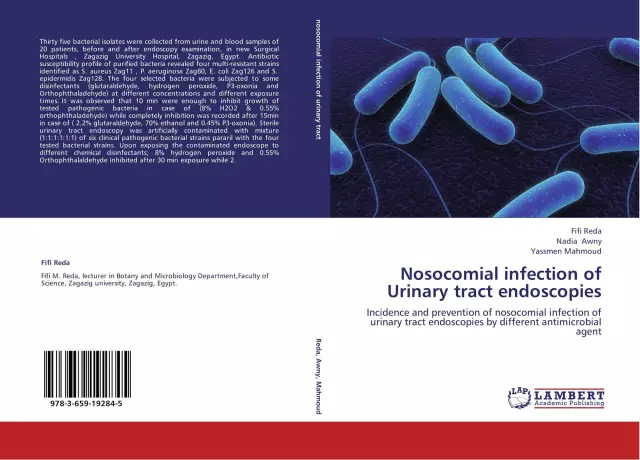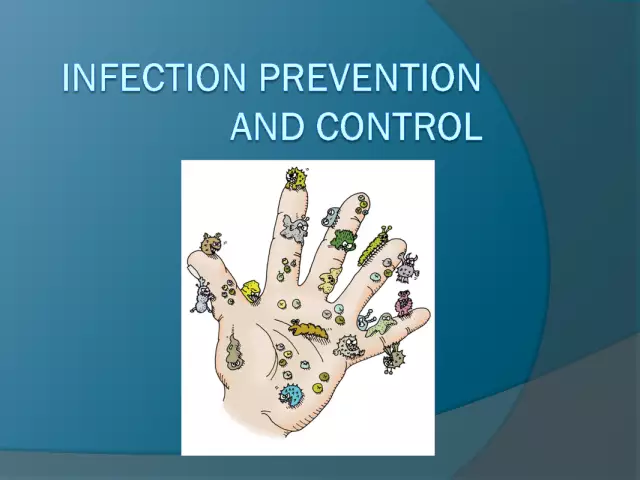- Author Rachel Wainwright [email protected].
- Public 2023-12-15 07:39.
- Last modified 2025-11-02 20:14.
Nosocomial infection

Going to a hospital, the least a person expects to find a new disease here, instead of getting rid of the existing one. Meanwhile, sometimes this happens. Infectious diseases that a person fell ill with while in a hospital are called nosocomial, or hospital-acquired infection. Both patients and employees of medical institutions get sick with it, and this happens much more often than we would like. In fact, hospital infections are one of the main problems of medical institutions around the world.
Where does nosocomial infection come from
Actually, it is clear where the infection comes from in the place where sick people constantly come. Another thing is not entirely clear - why it is not destroyed there, but remains, and even spreads. There are several reasons:
- The emergence of resistant strains of microbes as a result of improper use of antiseptic agents;
- Insufficient technical equipment of the hospital: cramped rooms, poor or faulty ventilation, outdated plumbing, outdated sterilization equipment, etc.;
- Lack of nursing and nursing staff, simply lack of hands necessary to maintain the proper level of cleanliness;
- Lack of antiseptic medicines or their poor quality;
- Improper zoning of the hospital, when patients with infectious diseases, or premises with an increased infectious danger, are not well isolated from the rest;
- Disregard for hygiene rules, both on the part of medical personnel and on the part of patients and their visitors.
What pathogens most often survive in a hospital
The causative agents of nosocomial infection are somewhat different from the usual microflora. They are characterized by increased aggressiveness, pathogenicity, resistance and ability to long-term survival. Hospital infection is represented by a wide range of microorganisms, bacteria, viruses and fungi, the most common are the following microbial families:
- Staphylococci;
- Streptococci;
- Escherichia, especially Escherichia coli;
- Salmonella;
- Klebsiella;
- Proteus;
- Enterobacteriaceae;
- Herpes, influenza, adenovirus, hepatitis viruses;
- Enteroviruses;
- Rotaviruses;
- Cytomegalovirus;
- Yeast-like fungi;
- Mold fungi;
- Radiant fungi.
The dominant diseases caused by nosocomial infection are pneumonia (37%), urinary tract infections (23%), catheterization-induced bacteremia (catheter-associated bacteremia, 12%).
Who is most at risk
The spread of nosocomial infection, of course, primarily depends on the department of the hospital. It is quite obvious that in the neurological and cardiological department the risk of infection is lower than in the infectious or burn department, but in no department is it completely excluded.
Not all patients are equally vulnerable to germs. At risk are people with a weakened immune system: the elderly, premature and weakened children, patients with oncological, endocrine, hematological, allergic and other immune diseases, lung diseases, metabolic disorders, who have undergone major operations, long-term hospital stay, bedridden.
Dangerous procedures
Some manipulations are more dangerous than others in terms of the possibility of contracting a hospital infection. The risk is especially great when carrying out the following procedures:
- Taking blood;
- Venesection (manipulations associated with violation of the integrity of the patient's veins);
- Puncture;
- Sounding;
- Endoscopic procedures;
- Injections;
- Transfusions (transfusion of drugs or blood);
- Operational interventions;
- Intubation;
- Inhalation anesthesia;
- Artificial lung ventilation;
- Catheterization;
- Hemodialysis.
As can be seen from the above list, almost all therapeutic and diagnostic manipulations associated with penetration into the internal environment of the body are somehow associated with an increased risk of infection, and therefore require a highly responsible approach on the part of medical personnel.

The most dangerous infectious medical instruments and devices
There is a classification of medical supplies according to the degree of their danger in relation to the possibility of contracting an infection, the so-called Spalding classification. In it, all medical devices are divided into three groups - critical, semi-critical and non-critical. Critical ones are those when using which the risk of infection is maximal, and therefore they must be sterilized. Semi-critical objects do not need to be sterilized, but they must be thoroughly disinfected. It's enough to be uncritical just to be clean.
- Critical items: surgical instruments, endoprostheses and implants, needles and injection systems, catheters, and all fluids that are injected parenterally (into the bloodstream);
- Semi-critical: equipment for anesthesia, inhalation, endoscopes, rectal thermometers, enema tips - that is, what is in contact with mucous membranes;
- Non-critical items include all items in contact with the skin, such as cuffs of blood pressure monitors, thermometers, crutches, bedding, dishes, bed liners, etc.
How to deal with a nosocomial infection
In order to successfully resist a hospital infection, the risk of which will always be present in hospitals, medical personnel must carefully follow the instructions developed for all therapeutic and diagnostic procedures. Protective equipment must not be neglected: masks and disposable gloves, constantly put on and off, although very tiring and not always convenient, can save the life and health, and not only of the health worker himself. Also, all medical personnel need to undergo annual preventive examinations, since they all belong to a high-risk group.
Patients should follow the part of the safety rules that depends on them. This includes adherence to basic hygiene rules, strict adherence to the recommendations of the attending physician, as well as refusal to thoughtlessly use antibacterial drugs. Unfortunately, the very widespread self-treatment with antibiotics, in the overwhelming majority of cases is incorrect, leads to the growth of resistant microflora. The emergence of such a resistant flora makes the available antibacterial agents ineffective and causes a constant need for new, increasingly powerful antibiotics.
Found a mistake in the text? Select it and press Ctrl + Enter.






